Cloud Cost Optimization: The Ultimate Guide to Cut Expenses
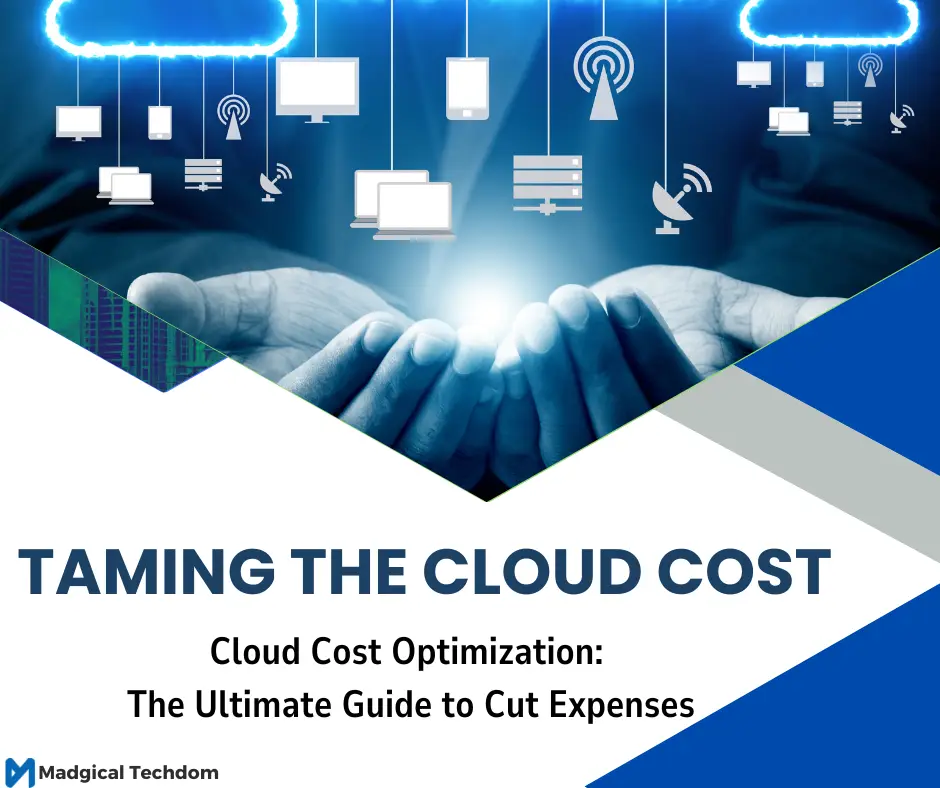
1. Introduction
In the fast-changing world of cloud computing, saving on costs isn’t just smart; it’s the key to getting the most out of your cloud. Think of it as turning extra spending into opportunities for growth and innovation. This guide is here to help you, as an AWS user, find simple ways to cut costs without losing out on performance. We’ll show you how to understand your spending and introduce tools that can help you save more and achieve success. It’s all about finding the right balance between cost and performance to make the most of your AWS environment!
2. Understanding Cloud Cost Optimization and Structure

Before you start optimizing costs, it’s essential to really understand what you’re currently spending. It’s not just about knowing the total amount; you need to dig into where and why those costs are happening. By taking a close look at your AWS usage, you’ll spot areas where you can save money without hurting your app’s performance or reliability. Here are key steps to help you understand your AWS cost structure:
2.1. Utilize AWS Cost Explorer
AWS Cost Explorer is a handy tool that helps you understand your AWS usage and spending. It lets you see your cost data in a clear way, so you can spot what’s driving up costs, use your resources more efficiently, and make smart choices to lower your cloud expenses. We’ll walk you through the two main parts of AWS Cost Explorer, the Cost and Usage Graph and the Cost and Usage Breakdown, and show you how they can help you save money.
2.1.1. Identifying Areas for Cloud Cost Reduction
Let’s say your company wants to cut down on AWS cloud costs. A great way to start is by using AWS Cost Explorer to look at your spending over the past six months. This tool helps you see where your money’s going and find ways to save.
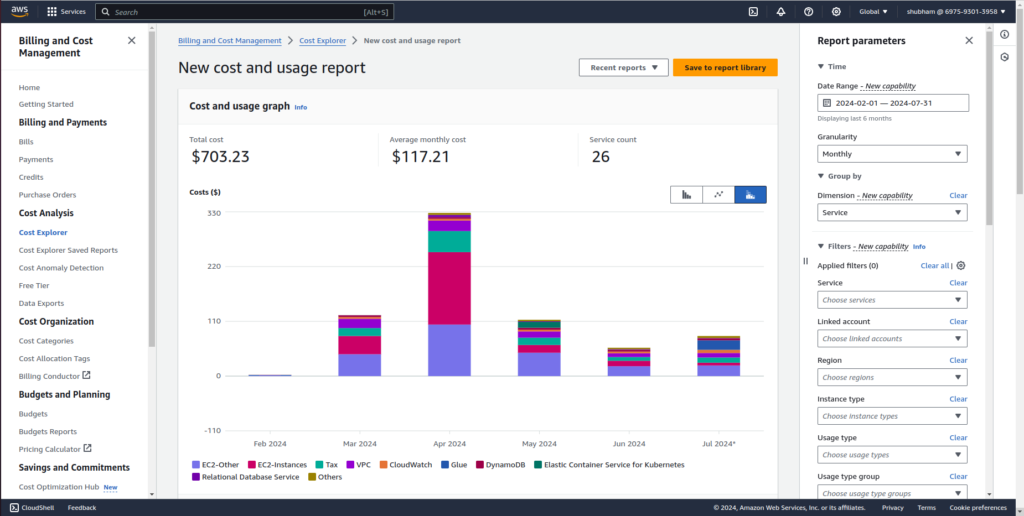
- Total Cost: $703.23 (for the selected period)
- Average Monthly Cost: $117.21 (helps you see spending patterns and set budgets)
- Service Count: 26 (shows how many different AWS services you’re using, which can help identify areas for optimization.)
In the image, there’s a noticeable spike of $330 in April. To keep your expenses in check, it’s important to regularly review your total costs. Look into why costs go up, whether it’s due to new services, traffic surges, or inefficient resource use.
2.1.2. Cloud Expense Management
To save on AWS costs, take a close look at your expenses over the whole period and find out which services are costing the most. This way, you can find the easiest places to cut costs first.
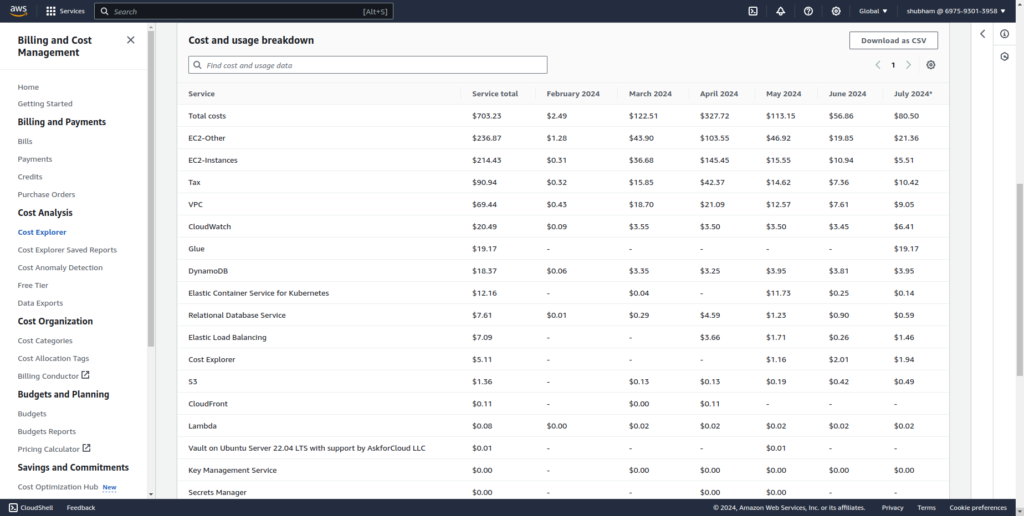
2.1.2.1. Detailed Breakdown
The detailed breakdown shows monthly costs for each service, allowing you to track spending trends and identify opportunities for optimization. EC2-Other ($236.87):
- Look for unused elastic IP addresses, load balancers, NAT gateways, and EBS volumes, including storage, snapshot storage, and data transfer.
EC2-Instances ($214.43):
- Explore auto-scaling and spot instances for cost savings.
- Consider rightsizing, using Reserved Instances or Savings Plans.
VPC ($69.44)
- Ensure that VPC peering connections are necessary and being used efficiently.
- Minimize cross-region data transfer by localizing resources within the same region.
CloudWatch ($20.49)
- Set appropriate retention policies for logs to avoid unnecessary storage costs.
- Regularly delete logs that are no longer needed.
- Ensure that custom metrics are essential and remove any that are not needed.
- Consolidate CloudWatch alarms where possible to reduce the number of alarms.
- Use log filters to reduce the amount of data ingested into CloudWatch Logs.
Glue ($19.17)
- Adjust the size of Glue jobs to match the workload requirements. Avoid over-provisioning.
- Regularly clean up unused databases, tables, and partitions from the Glue Data Catalog.
- Ensure that development endpoints are stopped when not in use to avoid unnecessary costs.
DynamoDB ($18.37):
- For unpredictable workloads, consider switching to DynamoDB On-Demand to pay for only the read and write requests you use.
- Ensure that global and local secondary indexes are necessary and used efficiently. Remove any unused indexes.
- Implement TTL to automatically delete expired data from tables, reducing storage costs.
2.1.3. Identify cost drivers
To keep your AWS costs in check, it’s important to know which services are costing you the most. Here’s how you can find out what’s driving up your costs and make those services more efficient:
2.1.3.1. Identify high-cost services
To manage your AWS costs better, start by spotting which services are making your bill climb the highest. For example, if EC2-Other and EC2-Instances are the biggest culprits, focus on optimizing these services to save more.
2.1.3.2. Analyze Specific Costs
As we discussed earlier, break down the costs for each service to see which resources or setups are the priciest. This will help you pinpoint where you can cut back and save more
2.1.3.3. Strategies For Implementing Cloud Cost Optimization
Use the strategies we talked about to cut costs for those pricey services. For instance, you could adjust instance sizes, switch to more cost-effective storage options, or clean up any unused resources. By focusing on these actions, you’ll be able to manage and reduce your AWS spending more effectively.
2.1.4. Analyze cost trends
With AWS Cost Explorer, you can dive into your spending history to uncover valuable insights. By looking at past data, you’ll spot trends and find spots where you can cut costs. Zero in on the services that rack up the most charges and those with inconsistent usage to start saving. For example:
- EC2 (Elastic Compute Cloud): Look for instances that are running all the time but aren’t being used much. Think about resizing, stopping, or switching to spot instances to save money.
- S3 (Simple Storage Service): Check your storage classes and lifecycle policies. Move data that you don’t access often to cheaper options like S3 Glacier.
- RDS (Relational Database Service): Review how you’re using your instances and storage. You might save money by resizing instances or opting for reserved instances if you’re in it for the long haul.
2.1.5. Establish cost allocation tags
Setting up cost allocation tags in AWS can make a big difference in managing and optimizing your cloud spending. To do this well, tag your resources based on things like environments (dev, QA, prod), projects, or business units. These tags act like labels that help you track and organize your costs.
For example, by tagging resources by environment, you can regularly check non-production environments and spot resources that aren’t being used. You can then shut down these idle resources to save money.
To optimize costs, consider these tasks, their effort and savings indicators, and potential savings:
| Task | Effort | Savings | Estimated Savings |
|---|---|---|---|
| Utilize AWS Cost Explorer | ★ | ★★ | Up to 15% |
| Analyze cost trends | ★★★ | ★★★ | 20-30% |
| Identify Cost Drivers | ★★ | ★★★ | 20-30% |
3. Rightsizing and Optimization
Right-sizing is a key practice in AWS cost optimization. It means adjusting your cloud resources to match your actual usage and performance needs. This helps you cut down on unnecessary costs by ensuring you’re not overpaying for resources you don’t fully use.
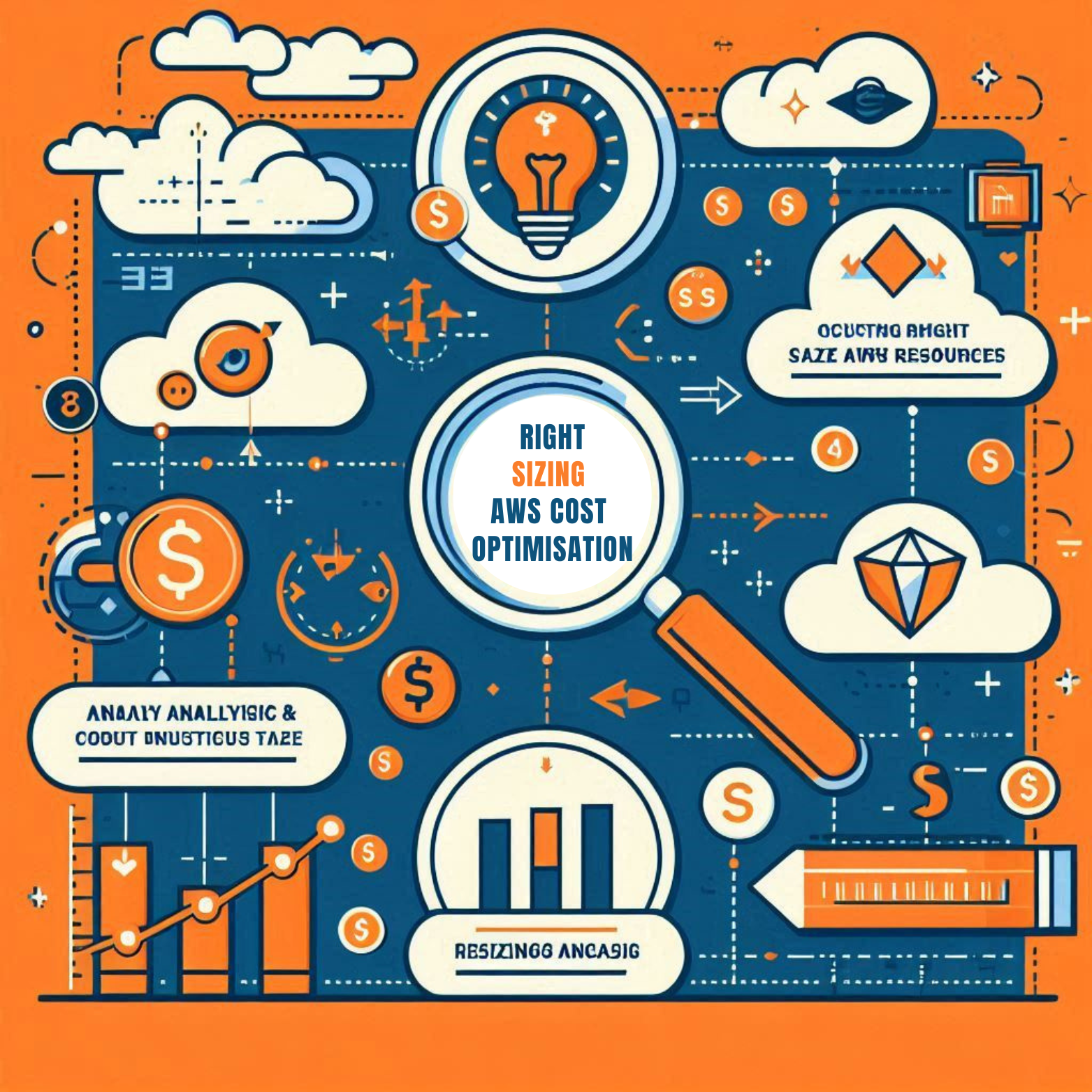
3.1. Understanding Right Sizing
Right-sizing helps you avoid overpaying for underutilized resources by analyzing usage patterns and making appropriate adjustments. This process is crucial for maintaining cost-efficiency in your AWS environment.
For example, consider you have several EC2 instances running a web application. After monitoring usage for a month, you discover that three of your m5.large instances are using only 15% of their CPU and 20% of their memory on average. By right-sizing from m5.large to m5.small, you would save $41.35 per month per instance, totaling $124.05 per month. for three instances, and $1,488.60 annually.
3.2. Leverage AWS Compute Optimizer
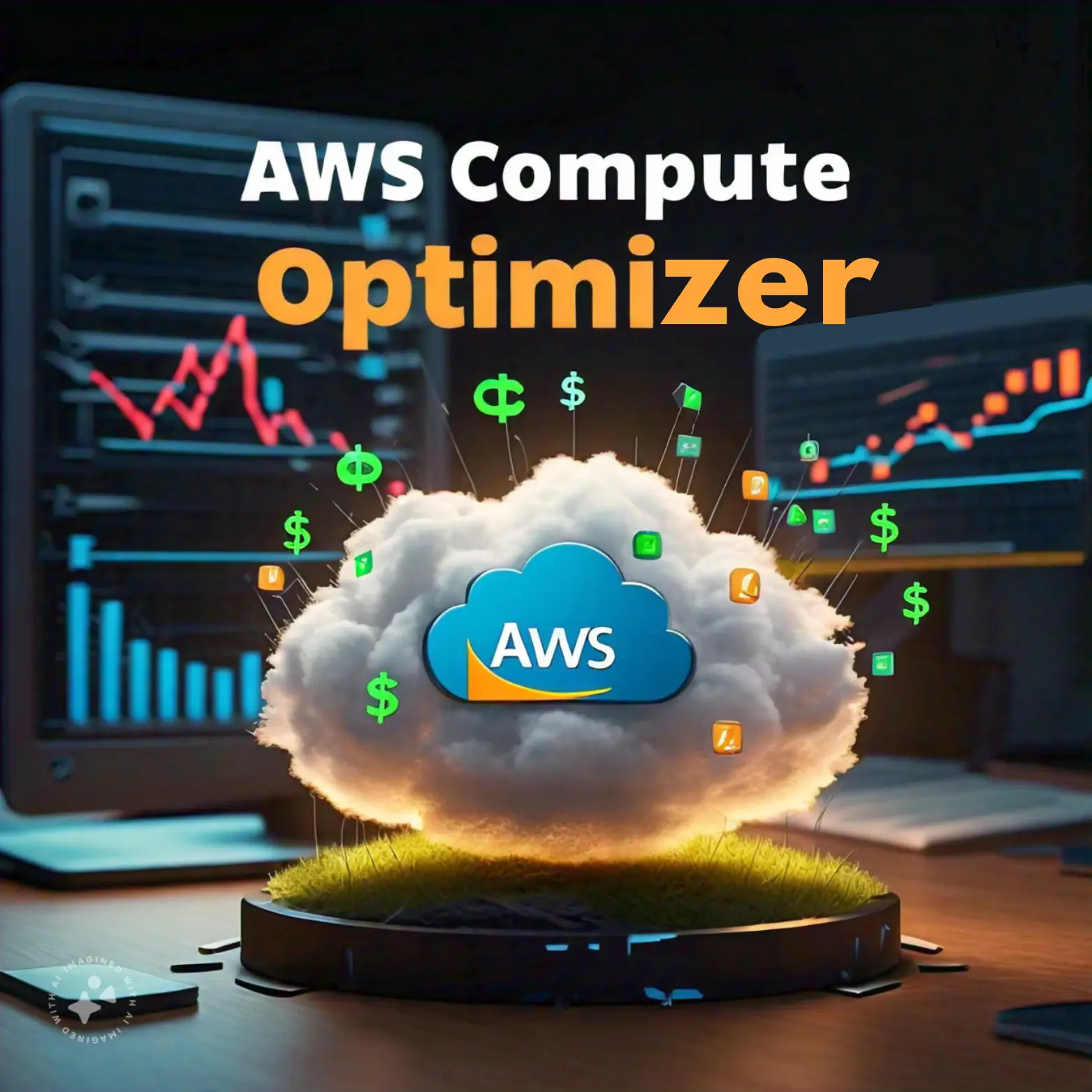
AWS Compute Optimizer helps you find EC2 instances that are either underused or over-provisioned and gives you tips on the best instance types and sizes based on your actual usage. By using this service, you can right-size your instances to cut costs and boost performance.
For example, if you have several EC2 instances of different sizes for various workloads, some might end up being underutilized, leading to wasted resources and higher costs. AWS Compute Optimizer looks at these instances and suggests downsizing, switching instance types, or tweaking Auto Scaling settings to better fit your usage. Following these recommendations can help lower your monthly AWS bill while keeping or even improving performance.
3.3. Utilize Auto Scaling

Auto Scaling is a handy AWS feature that automatically adjusts the number of instances in your setup based on current demand. This helps you use resources efficiently, cut costs, and keep your application running smoothly during different traffic levels.
For example, think of an e-commerce site that sees a traffic surge during holiday seasons. If the site runs on a fixed number of m5.large instances, it might struggle with high traffic and waste resources during quieter times. By setting up Auto Scaling, you can configure it to add more instances when CPU usage goes over 70% and reduce the number when it drops below 30%. You can automate this with CloudWatch alarms.
During quieter periods, Auto Scaling will cut down the number of instances, saving you money. For instance, if you usually need 10 instances at peak times and only 4 during off-peak hours, Auto Scaling ensures you’re not paying for unused capacity. When holiday traffic hits, Auto Scaling will automatically spin up more instances to handle the extra load, keeping the site fast and responsive for users.
In this way, Auto Scaling helps balance performance and cost by adjusting resources in real-time, making sure your site runs efficiently and you only pay for what you use.
3.4. Optimize EBS Volumes
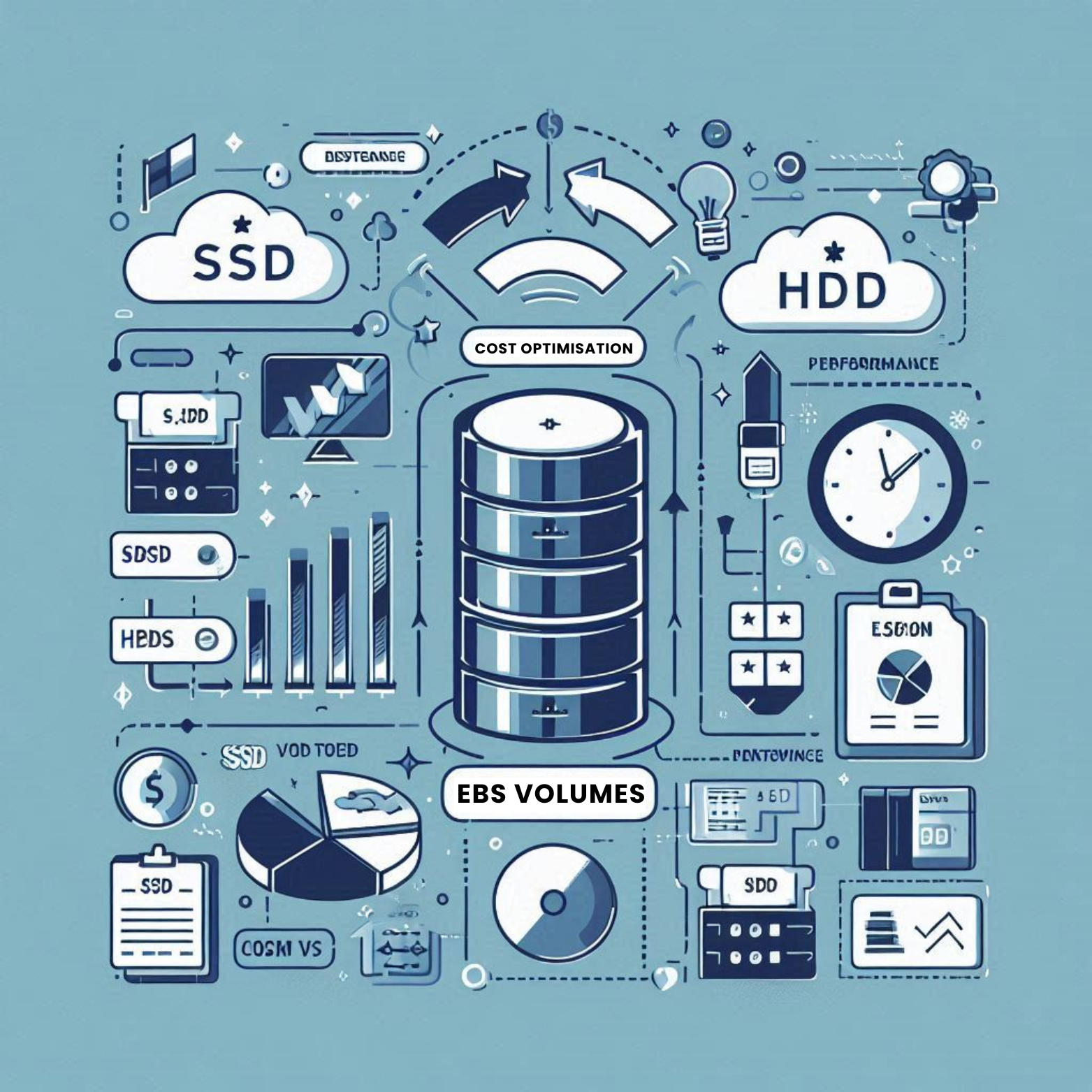
By choosing the right EBS volume types, optimizing volume sizes and IOPS, and using lifecycle policies, you can cut down on storage costs while keeping performance high.
Let’s take an OTT platform as an example. During peak hours, when many users are streaming videos, you’ll need high-performance storage for video content, user data, and metadata. But during off-peak times, the workload drops, so you don’t need the same level of performance.
Here’s how you could optimize:
- Use Throughput Optimized HDD (st1) for storing HD video content, which balances performance and cost for large, sequential read/write operations.
- Use Cold HDD (sc1) for archives that are accessed less frequently, helping you save on storage costs.
- Use General Purpose SSD (gp3) for user data and metadata, offering a good mix of performance and cost.
- Use Provisioned IOPS SSD (io2) for your primary database where you need high performance and low latency.
By matching EBS volume types to your actual usage, you only pay for what you really need, which can lead to significant cost savings.
3.5. Reserved Instances and Savings Plans
AWS offers two great options to help you save big on your bills: Reserved Instances (RIs) and Savings Plans. Both options let you commit to using AWS resources upfront in exchange for lower prices compared to on-demand instances. They’re perfect for workloads that are predictable and consistent.

Imagine you run a chatbot customer support company where managing costs is key to staying profitable. By using Reserved Instances (RIs) and Savings Plans, you can cut down your AWS expenses without sacrificing service quality.
Here’s how to optimize your costs:
Analyze Usage Patterns: Look at how your chatbot operates. Identify instances that are running consistently, like those handling peak support hours or specific chatbot tasks. These steady workloads are perfect for RIs or Savings Plans.
Use AWS Cost Explorer: This tool helps you see your spending habits and find where you can save.
Calculate Savings: Use the AWS Pricing Calculator to figure out potential savings with different RI and Savings Plan options. Compare them based on upfront costs, term lengths, and your financial strategy.
Monitor and Adjust: Set up a system to track how well your RIs and Savings Plans are working. Regularly review and adjust your commitments based on usage patterns to keep your savings optimized.
By following these steps and using tools like AWS Trusted Advisor, you can manage your AWS costs effectively and keep your chatbot operation running efficiently.
3.6. Utilize Spot Instances
Spot instances provide a budget-friendly way to run your applications by letting you use unused EC2 capacity at lower prices than on-demand instances.
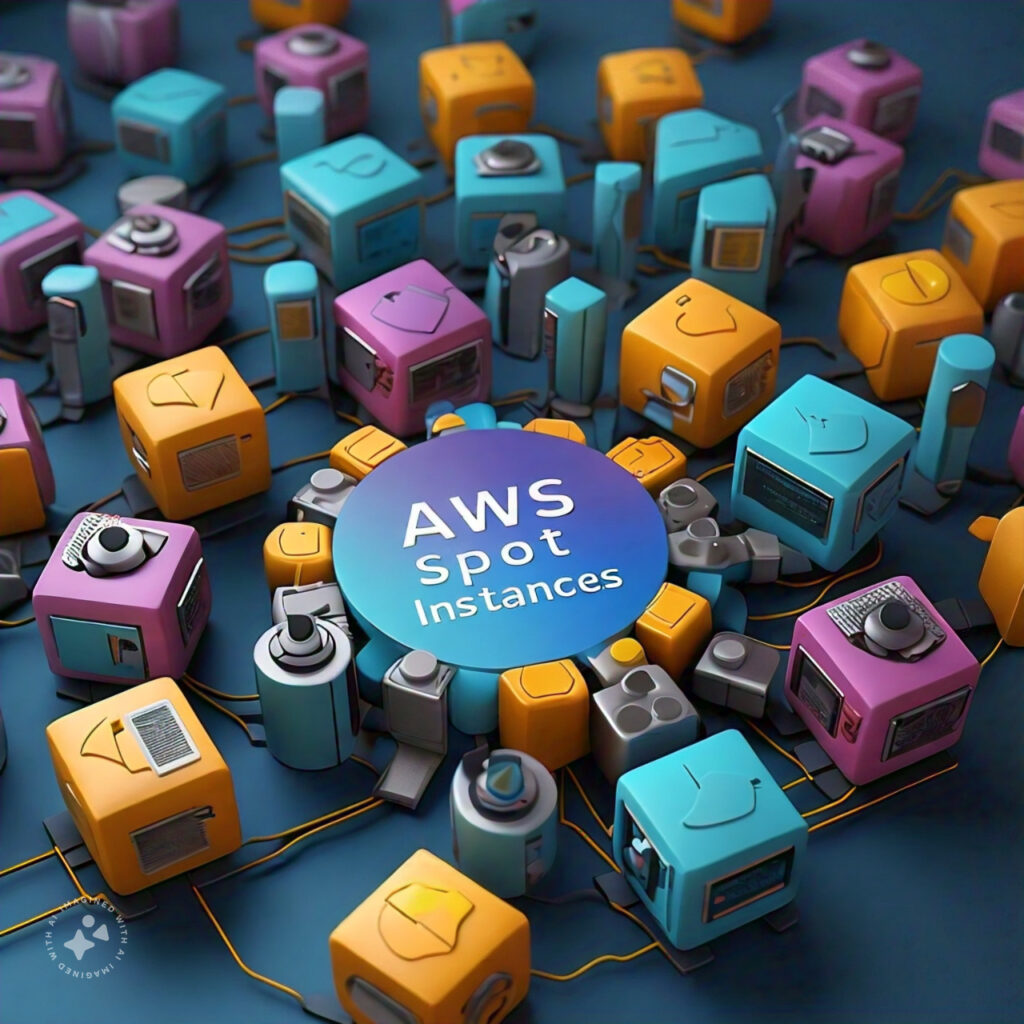
Imagine you’re running a fintech company with workloads that fluctuate a lot. During peak times, you need more resources, but during quieter periods, you might have extra capacity going to waste. Spot Instances can help you save a ton by providing spare EC2 capacity at up to 90% off compared to on-demand pricing.
You can use Spot Instances for tasks like training machine learning models, data processing, and running background jobs. These tasks can usually handle interruptions, so you won’t risk losing important data. For example, using Spot Instances to train a machine learning model can save you a lot of money while still getting accurate results.
Spot Instances can also help you manage unexpected demand spikes by automatically scaling resources, ensuring a smooth customer experience without the high costs of on-demand instances. By choosing the right workloads and setting up solid error handling, you can make the most of Spot Instances to cut costs and keep your service top-notch.
3.7. S3 Storage Optimization
Choosing the right Amazon S3 storage class is key to optimizing costs and managing your data effectively. It ensures your data is stored efficiently according to how often you need to access it and how long you plan to keep it.

Imagine you run a product review website that handles tons of data, including product images, user content, and reviews. To keep your site running smoothly and cost-effectively, picking the right Amazon S3 storage classes is key.
For product images that need quick access, S3 Standard is a great choice because of its low latency and high performance. For images that are accessed less often, like those used in product comparisons, S3 Intelligent Tiering can help save money by automatically moving data to cheaper storage when it’s not frequently accessed.
User-generated content like reviews and photos can have varying access patterns. S3 Standard works well for content that’s frequently accessed, while S3 Intelligent Tiering is useful for older or less popular content that might see fluctuating access.
For review data, S3 Standard is perfect for real-time analytics and reporting. Archived review data can be stored in S3 Standard-IA or even S3 Glacier to save significantly on costs. S3 Standard-IA can reduce costs by up to 40% compared to S3 Standard, and S3 Glacier can cut costs by up to 90%.
To get the most out of these savings, set up lifecycle policies to automatically move data between storage classes as it ages or access patterns change. Don’t forget to use tools like AWS Cost Explorer to keep an eye on your storage costs and ensure everything stays within budget. For more deep insights, have a look into this article.
By strategically choosing the right S3 storage classes, product review websites can cut costs while still ensuring their data remains accessible and durable.
3.7.1. Implement Lifecycle Management
By strategically using S3 storage classes and lifecycle rules, gaming companies can save on costs while keeping game performance and player experience top-notch.
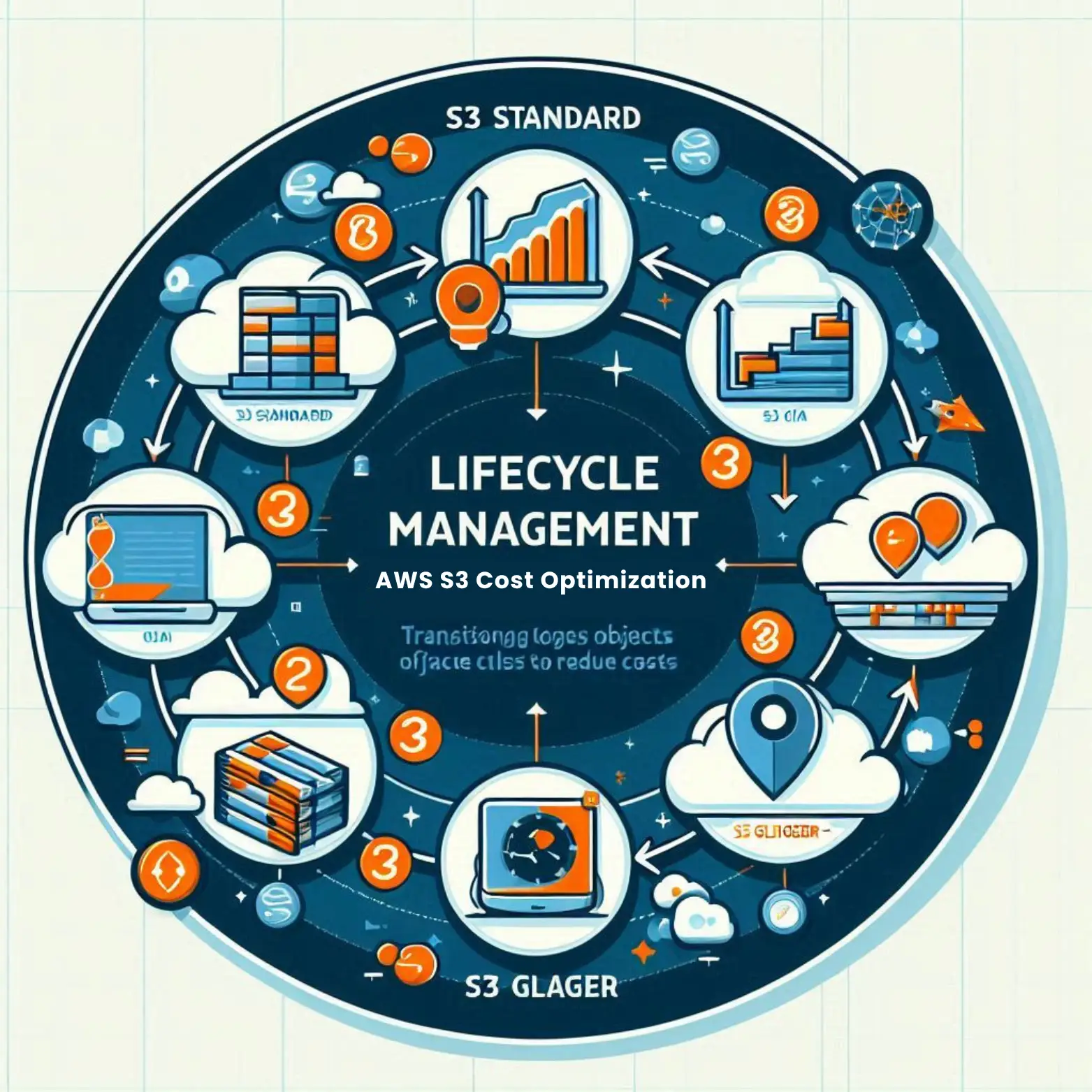
If you’re running a gaming company with a lot of data, like game assets, user-generated content, player profiles, and game logs, choosing the right Amazon S3 storage classes and setting up lifecycle rules is key to balancing performance and cost.
For game assets that need quick access, like game textures and sounds, S3 Standard is your best bet because it offers low latency and high performance. For assets that aren’t accessed as often, such as older game versions or promotional materials, S3 Intelligent Tiering automatically moves data to cheaper storage as access patterns change, saving you money.
User-generated content, like player-created levels, skins, or videos, can vary in popularity. Use S3 Standard for highly popular content that needs fast access, and S3 Intelligent Tiering for less popular items that may not be accessed as frequently.
For player profiles and game logs, which are crucial for real-time analytics and personalizing the player experience, S3 Standard is ideal. For older or less frequently accessed logs, you can save on storage costs by using S3 Standard-IA or S3 Glacier.
Lifecycle Rules
To automate cost optimization with Amazon S3, you can set up lifecycle rules:
Transition to S3 Standard-IA: Move less frequently accessed game assets and user-generated content to S3 Standard-IA after a set period, like 30 days. This helps cut storage costs while keeping data accessible.
Transition to S3 Glacier: Archive old game logs and infrequently accessed data to S3 Glacier after a longer retention period, such as 1 year. This move offers significant savings, reducing costs by up to 90%.
Expiration: Automatically delete outdated or unnecessary data, like temporary files and old logs, after a defined period. This helps free up space and further reduce costs.
By aligning your S3 storage classes and lifecycle rules with how your data is used and how long you need to keep it, you can make your storage more cost-efficient. For example, moving less frequently accessed game assets to S3 Standard-IA can cut costs by up to 40% compared to S3 Standard, while archiving old game logs in S3 Glacier can save up to 90%.
3.7.2. Compress Data
Data compression is a key strategy for cutting storage costs on Amazon S3. By shrinking file sizes, you can save significantly on your monthly storage bills. Smaller files take up less space, which means lower storage costs, and they also use less bandwidth, reducing your data transfer expenses.
For example, compressing image files by 50% can lead to noticeable savings. Text-based data can see even greater reductions. Effective compression strategies help you save money without losing data quality.
Additionally, data compression improves performance. Compressed files transfer faster, speeding up data handling, and smaller files use bandwidth more efficiently, boosting overall network performance.
To get the most out of data compression, choose the right format based on your data type and compression needs. Common options include ZIP, GZIP, and BZIP2. Compress your files before uploading them to S3 and consider automating the process for efficiency. Make sure your applications can handle decompression when accessing the data.
By carefully selecting compression methods and formats, you can maximize savings and enhance data management on Amazon S3.
For optimizing your rightsizing and resource usage, review the following tasks, their effort and savings indicators, and the potential cost savings.
| Task | Effort | Savings | Estimated Savings |
|---|---|---|---|
| Leverage AWS Compute Optimizer | ★★★ | ★★★★ | Up to 25% |
| Utilize Auto Scaling | ★★★ | ★★★ | 20-30% |
| Optimize EBS Volumes | ★★★ | ★★★★ | 30-40% |
| Use Reserved Instances and Savings Plans | ★★★★ | ★★★★★ | Up to 72% |
| Utilize Spot Instances | ★★★ | ★★★★★ | Up to 90% |
| Select appropriate S3 storage classes | ★ | ★★★★ | Up to 80% |
| Compress Data | ★★ | ★★★ | Up to 30% |
4. Network Optimization
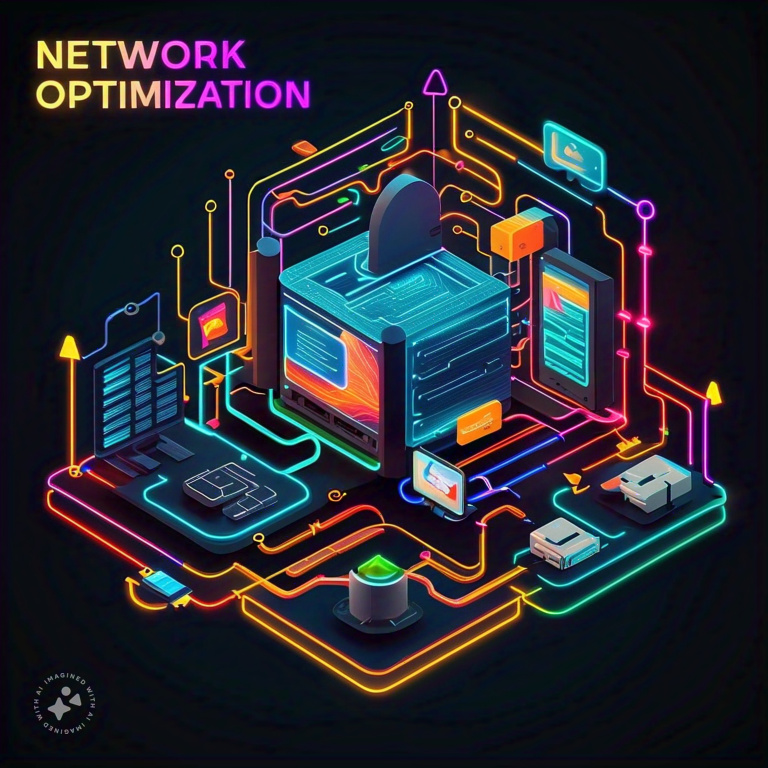
Network optimization is crucial for managing AWS costs and ensuring efficient data transfer. By fine-tuning your network setup and minimizing unnecessary data movement, you can cut expenses while keeping performance high. This section will guide you through key strategies and advanced AWS features to achieve optimal network efficiency.
We’ll cover practical steps to enhance your AWS network, including selecting the right network components, implementing advanced routing protocols, and taking advantage of cost-saving options. Let’s dive into how you can optimize your AWS network for both performance and cost-efficiency
4.1 Optimize Data Transfer
A major OTT platform faced rising AWS costs, mainly due to high data transfer expenses from their extensive video library and millions of concurrent users. To tackle this, they implemented a comprehensive network optimization strategy.
First, they used Amazon S3 Transfer Acceleration to speed up data transfers to and from S3, which cut down on transfer times and costs. This feature significantly boosted upload and download speeds for their video content, leading to faster delivery and lower egress costs.
Next, they deployed Amazon CloudFront, a content delivery network (CDN), to cache video content closer to users at edge locations. This approach lessened the load on their origin servers, cut data transfer costs, and improved user experience by reducing latency.
To optimize data transfer within their AWS setup, the company set up VPC endpoints to S3. This change removed the need for internet egress traffic when accessing S3 data from within their VPC, resulting in substantial cost savings and better network performance.
By combining S3 Transfer Acceleration, CloudFront, and VPC endpoints, the OTT platform achieved significant cost reductions and enhanced content delivery performance. This strategic network optimization not only improved the user experience but also positively impacted their bottom line, showing that cost management can go hand in hand with quality service.
4.2. Leverage VPC Peering
By strategically using VPC peering and VPC endpoints, you can unlock substantial cost savings and performance boosts in a complex, data-heavy setup.

An IoT company focused on air pollution monitoring faced rising costs due to transferring data from thousands of devices across a large area. Their setup included multiple VPCs for device management, data processing, and machine learning.
To tackle this, the company used VPC peering to link their device management VPC with their data processing VPC. This eliminated the need for data transfer over the public internet, cutting costs and reducing latency.
They also set up VPC endpoints for S3 in the data processing VPC. This allowed their EC2 instances to communicate directly with S3 buckets, bypassing the public internet and further reducing costs while enhancing security.
By combining VPC peering with VPC endpoints for S3, the company achieved lower data transfer costs, better latency, and improved system performance. This optimization allowed them to focus more on advancing their air pollution monitoring technology and expanding their services.
Overall, the strategic use of VPC peering and VPC endpoints proved effective in reducing costs and boosting performance in their data-intensive environment.
4.3. Use Security Groups Effectively

A travel company uses AWS for managing its booking platform, customer data, and internal applications. To keep data secure and minimize costs, setting up robust security group configurations is essential.
By creating strict rules that allow only necessary traffic, the company reduces its attack surface and prevents unauthorized access. For example, they limit SSH access to specific administrative IP addresses and restrict HTTP/HTTPS traffic to known client ranges. This approach helps protect against brute-force attacks and data breaches.
The company also adheres to the principle of least privilege, giving only the necessary permissions to minimize risks and lower data transfer costs. Regularly reviewing and updating security group rules ensures that security measures keep up with changing threats and business needs.
To monitor network traffic and spot potential vulnerabilities, they use VPC Flow Logs. Analyzing these logs helps the security team detect unusual traffic patterns and adjust security group rules proactively.
Effective security group configurations also help cut down on data transfer costs. By restricting traffic to essential sources and destinations, the company can reduce outbound data transfer charges. Regularly checking AWS bills and correlating them with security group rules can reveal further optimization opportunities.
By following these security best practices and using AWS features, the travel company can enhance its security, reduce costs, and maintain the confidentiality, integrity, and availability of its data.
Reviewing these network optimization tasks, their effort and savings indicators, and potential cost savings can further improve your network efficiency.
| Task | Effort | Savings | Estimated Savings |
|---|---|---|---|
| Optimize Data Transfer | ★★★ | ★★★ | 20-30% |
| Leverage VPC Peering | ★★★ | ★★★★ | 30-40% |
| Use Security Groups Effectively | ★ | ★★ | 9-12% |
5. Database Optimization
Database optimization is crucial for maintaining top-notch performance and controlling costs. By fine-tuning database resources to match your workload demands, you can avoid both overprovisioning and underutilization.
5.1. Rightsize, Scaling, and Instance Selection
Rightsizing your database instances is essential for balancing performance and cost in AWS. By matching the instance type and size to your actual workload demands, you can avoid the pitfalls of both overprovisioning and underprovisioning. Overprovisioning means you’re paying for more resources than you need, while underprovisioning can slow down your applications.
Here’s how to get it right:
- Analyze Workload Patterns: Use tools like AWS CloudWatch to track your database’s performance and resource usage. Look at metrics like CPU, memory, and storage to understand how your database is performing.
- Adjust Instance Types and Sizes: Based on the insights you gather, choose the instance types and sizes that best fit your needs. This might mean scaling down to save on costs or scaling up if you need more power.
- Ongoing Optimization: Rightsizing isn’t a one-time task. As your workloads change, regularly review and adjust your database resources to ensure you’re always getting the best performance for the cost.
By continuously evaluating and adjusting your database instances, you can keep costs in check while maintaining excellent performance for your applications.
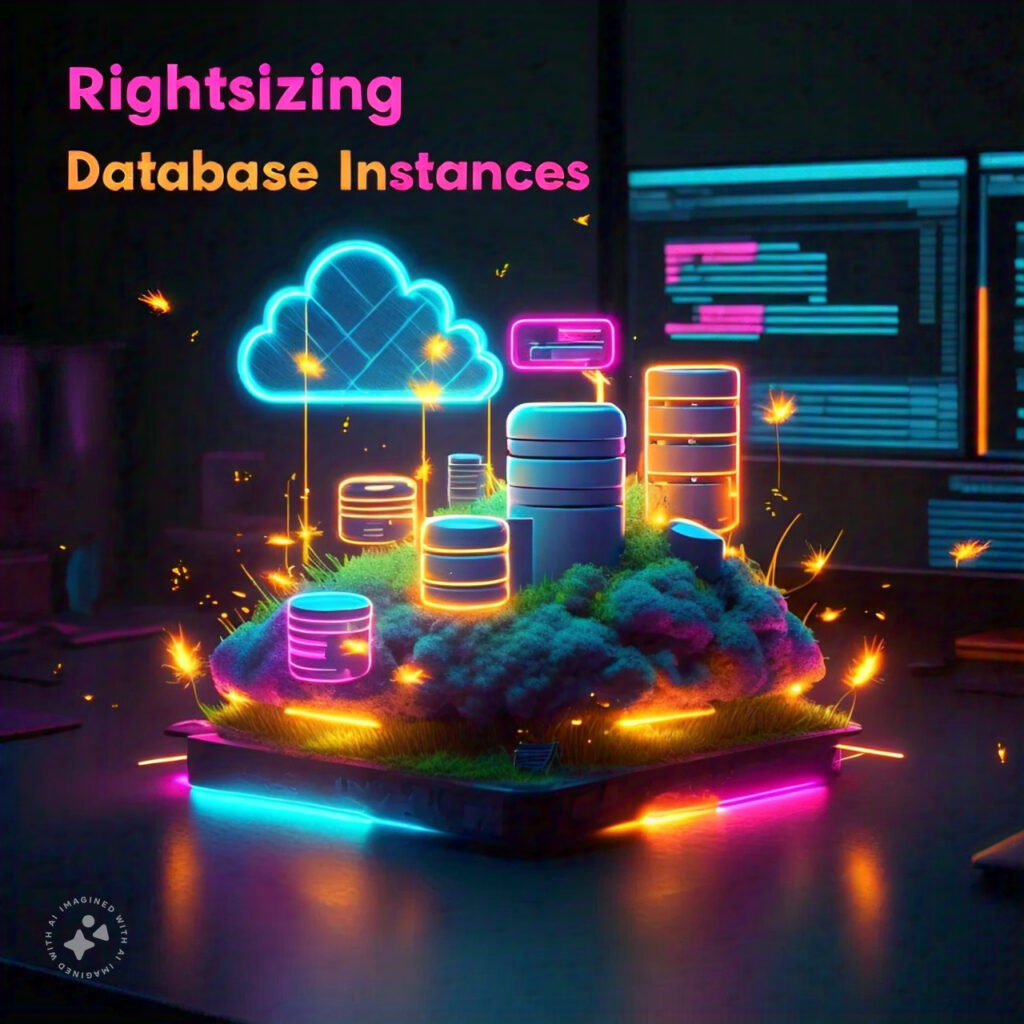
Imagine you’re running a big retail chain and your database costs are spiraling because you’ve got this giant r5.4xlarge instance that’s barely breaking a sweat. To tackle this, you decide it’s time for a major database makeover.
First up, you swap out that oversized r5.4xlarge for a more reasonably sized r5.2xlarge. This move slashes your costs but keeps everything running smoothly. Next, you get clever and add read replicas. These replicas handle the heavy lifting of read operations, which means you can adjust or even turn off the main database instance when traffic slows down.
Then, you turn on auto-scaling for both your main instance and the read replicas. This means your system can automatically adjust resources based on how busy things are, so you’re never wasting money on unused capacity.
Finally, you fine-tune your choice of instance types. For your primary database, which deals with write-heavy tasks, you stick with an r5 instance for top-notch performance. But for the read replicas, you consider more budget-friendly options like t3 or m5d, depending on what you need.
By smartly resizing your instances, using read replicas, and applying auto-scaling, you cut costs without slowing down your database. This strategy not only saves you money but also frees up budget for growing your business. It’s a great example of how managing your database wisely can make a big difference in your bottom line.
5.2. Leveraging Advanced Database Features for Optimization
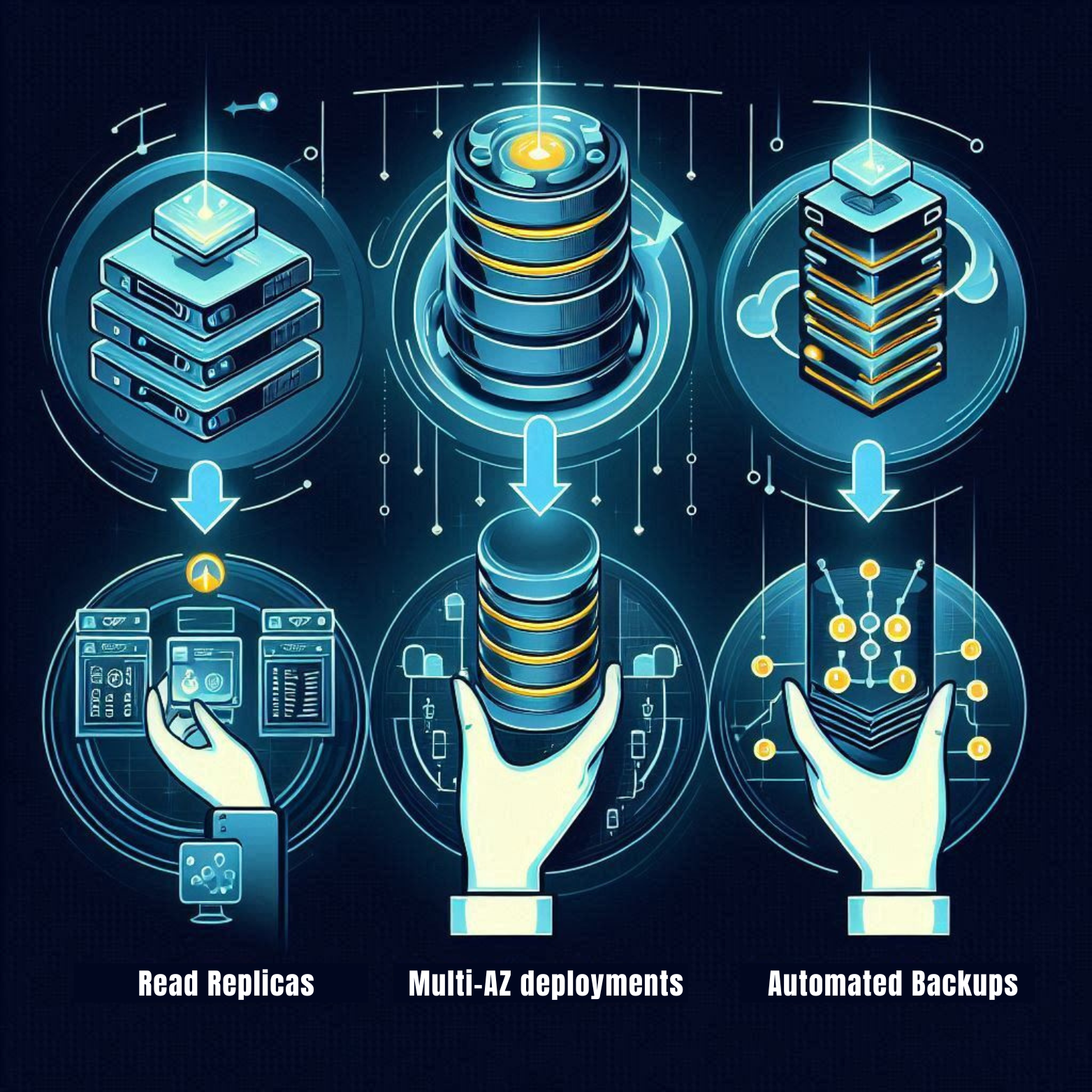
To achieve optimal database performance and cost-efficiency on AWS, incorporating advanced features is crucial. Read replicas, multi-AZ deployments, and automated backups offer significant benefits in these areas.
- Replicas and Multi-AZ: Boosting Performance and Efficiency
Read replicas distribute read traffic across multiple instances, alleviating load on the primary database. This improves query performance and reduces latency, particularly for read-heavy applications. By scaling read operations independently, you can optimize costs without impacting the primary database.
- Multi-AZ Deployments: High Availability and Cost Savings
Multi-AZ deployments provide automatic failover to a standby instance in case of failures, ensuring continuous availability and minimizing downtime. While there’s an additional cost for the standby instance, the protection against costly outages often justifies the expense.
- Automated Backups: Data Protection and Cost Efficiency
AWS RDS offers automated backups, safeguarding your data and simplifying disaster recovery. By eliminating manual backup processes, you reduce operational costs and minimize the risk of human error. Additionally, AWS optimizes backup storage, resulting in cost savings.
- Combining Strategies for Maximum Impact
To fully optimize your database, consider combining these features. For instance, use read replicas in conjunction with multi-AZ deployments to distribute read traffic across multiple Availability Zones, enhancing both performance and availability. Automated backups protect your database while leveraging cost-efficient storage options.
By strategically implementing these advanced features, you can significantly improve database performance, reduce costs, and enhance overall system reliability.
5.3. Monitor Database Performance
Monitoring database performance is crucial for maintaining optimal efficiency and cost-effectiveness on AWS. By diligently tracking key metrics and proactively addressing performance bottlenecks, organizations can significantly improve database operations.

Key Areas of Focus:
- Identify Performance Bottlenecks: Utilize tools like Amazon CloudWatch, AWS Performance Insights, and RDS Enhanced Monitoring to pinpoint areas of constraint. Focus on metrics such as CPU utilization, memory usage, disk I/O, query execution time, and connection counts. Implement alerts for critical thresholds to enable timely responses.
- Reduce Costs: Prioritize efficient resource utilization by avoiding overprovisioning. Explore cost-saving options like Spot Instances for flexible workloads and Reserved Instances for predictable workloads.
- Optimize Database Configuration: Enhance query performance through effective indexing, query analysis, and caching strategies. Refine database structure by employing normalization and partitioning techniques. Rightsize database instances based on workload demands and fine-tune database parameters. Leverage auto-scaling to dynamically adjust resources based on workload fluctuations.
Evaluate these tasks for database optimization, including their effort and savings indicators and potential cost savings, to improve your database performance and cost-efficiency:
| Task | Effort | Savings | Estimated Savings |
|---|---|---|---|
| Rightsize, Scale, and Select Instances | ★★★ | ★★★ | 20-30% |
| Implement Cost Allocation Tags | ★★★ | ★★★★ | 25-35% |
| Consider Third-Party Cost Management Tools | ★★★ | ★★★★ | 15-25% |
6. Cost Management Tools and Services
AWS Cost Management is like your personal financial advisor for the cloud. It offers a range of tools to help you get a grip on your cloud spending. With these tools, you can track where your money is going, set budgets to keep your spending in check, and spot areas where you can cut costs. By using AWS Cost Management effectively, you’ll have the insights you need to make smart decisions about how to allocate resources and plan your finances.
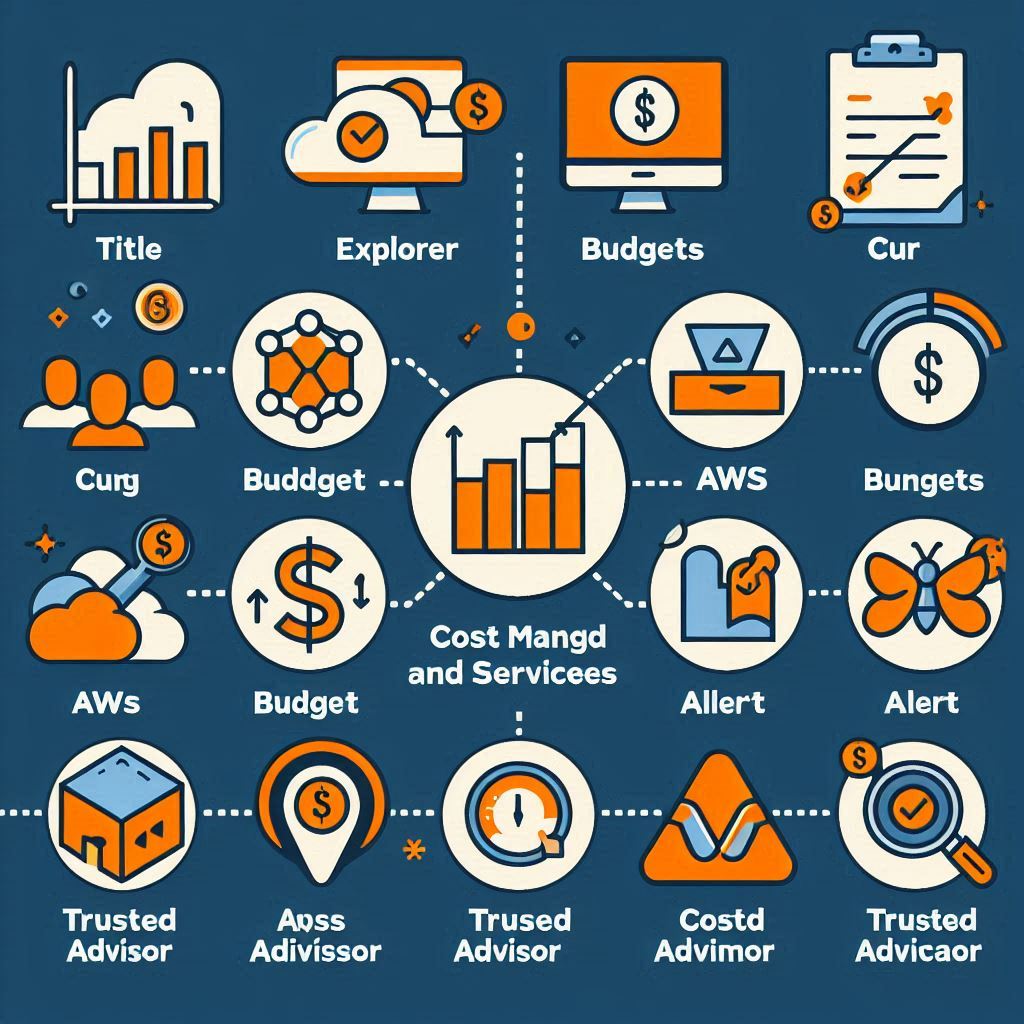
Key AWS Cost Management Tools:
An ed-tech company facing rising AWS costs during a period of rapid growth took a strategic approach to manage expenses and support their expansion.
First, they used AWS Cost Explorer to analyze their spending patterns, discovering that database instances were their biggest cost drivers. They then turned to AWS Trusted Advisor to optimize their resource allocation, resizing their database instances and cutting costs by 20%. To keep spending under control, they set up AWS Budgets to set limits and get alerts for any overspending.
Next, they exported AWS Cost and Usage Report (CUR) data to Amazon S3 for detailed analysis, which helped them make more informed decisions about Reserved Instance purchases. They also used AWS Cost Anomaly Detection to spot an unexpected spike in storage costs due to a misconfigured backup policy. Fixing this issue led to a 15% reduction in storage expenses.
Overall, these efforts led to a 35% reduction in costs within six months. The savings were then reinvested into product development and growth initiatives.
By leveraging AWS cost management tools effectively, the company turned their cost challenges into opportunities for growth.
6.1. Utilize AWS Budgets
AWS Budgets is a powerful tool that helps you monitor and manage your AWS costs and usage. By setting up budgets, you can track your spending against predefined thresholds and receive alerts when your costs exceed these thresholds. This proactive approach allows you to maintain control over your cloud expenses and prevent unexpected charges.
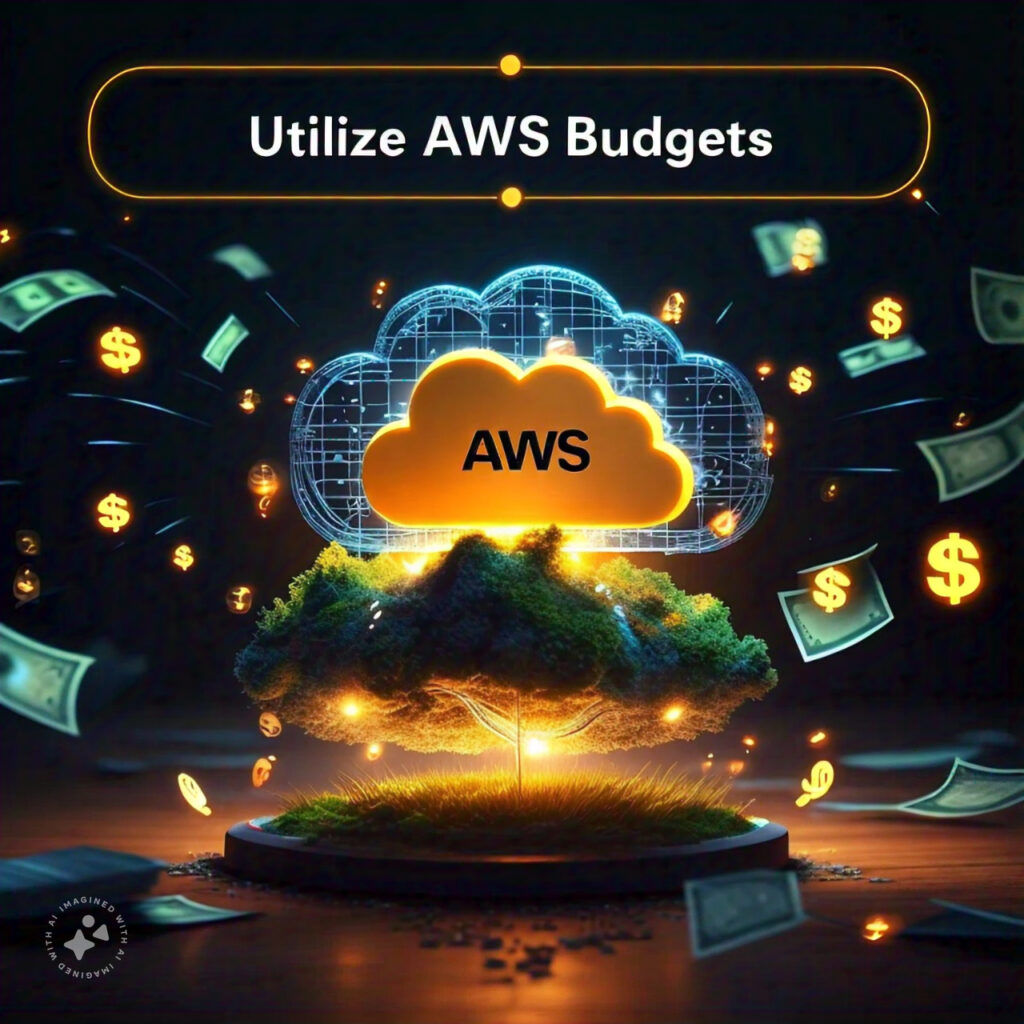
A non-profit focused on educating underprivileged children faced rising AWS costs as their student base grew. To keep expenses in check and make the most of their funds, they turned to AWS Budgets.
They set a monthly EC2 budget of $5,000 to keep their spending under control. As the month went on, they noticed spending creeping up towards $4,000, which triggered an alert. By checking this alert, they found and shut down several underutilized EC2 instances.
Thanks to their proactive approach, the NGO avoided exceeding their budget and optimized how they used their resources. The money saved was redirected into expanding their educational programs, allowing them to reach even more children in need.
This example shows how AWS Budgets can be a powerful tool for non-profits to manage their finances and boost their impact.
6.2. Leverage AWS Cost Anomaly Detection

A rapidly growing chatbot company was facing unexpected spikes in AWS costs, impacting their bottom line. To gain control over their cloud spending, they implemented AWS Cost Anomaly Detection.
The tool continuously monitored the company’s AWS usage, identifying unusual spending patterns. In one instance, an anomaly was detected in the compute costs associated with chatbot interactions. Upon investigation, it was found that a surge in chatbot traffic had triggered the automatic scaling of instances to handle the increased load. However, the scaling policy was not optimized, resulting in overprovisioned resources.
By promptly addressing the issue and adjusting the auto-scaling policy, the company was able to significantly reduce costs. The timely intervention prevented an estimated $10,000 in unnecessary spending over a three-month period.
AWS Cost Anomaly Detection proved instrumental in identifying this cost driver and enabling the company to take corrective action. This success story underscores the importance of proactive cost management and the value of utilizing advanced tools like AWS Cost Anomaly Detection.
6.3. Implement Cost Allocation Tags
Cost allocation tags in AWS are essential tools for gaining detailed insights into your cloud spending. These tags are metadata labels that you attach to your AWS resources, consisting of key-value pairs. By implementing cost allocation tags, you can categorize and track your AWS costs across various dimensions, such as projects, departments, or business units. This practice enhances your ability to manage budgets, forecast expenses, and optimize resource utilization effectively.

A rapidly growing fintech company faced challenges in managing its AWS costs as it expanded its product offerings. To gain better visibility into spending and allocate costs accurately, they implemented a robust cost allocation tagging strategy.
By tagging resources with project names, departments, and environments, the company gained granular insights into cost distribution. They discovered that a specific marketing campaign was driving a significant portion of the cloud bill. Armed with this information, they optimized resource utilization and negotiated better rates with vendors, resulting in a 20% reduction in campaign-related costs.
Additionally, by tagging resources based on development, testing, and production environments, the company identified opportunities to consolidate resources and eliminate redundant costs. This optimization led to an overall cost reduction of 15%.
Through effective cost allocation tagging, the fintech firm achieved a 35% reduction in AWS expenses while gaining valuable insights into their spending patterns. This enabled them to make data-driven decisions, allocate budgets more effectively, and reinvest savings into product innovation and expansion.
6.4. Consider Third-Party Cost Management Tools

A fintech company experienced rapid growth, leading to escalating AWS costs. To gain granular control and automation, they adopted a combination of AWS native tools and third-party solutions.
Initially, AWS Cost Explorer provided insights into spending patterns, revealing that database instances were the primary cost drivers. To optimize further, CloudHealth was integrated to offer in-depth analysis and recommendations. Through detailed cost allocation and rightsizing suggestions, the company identified underutilized instances and implemented cost-saving measures.
To automate cost optimization, Cloud Custodian was deployed to create policies for terminating idle instances and rightsizing resources based on predefined criteria. This proactive approach significantly reduced operational overhead.
By combining these tools, the fintech company achieved a 25% reduction in AWS costs within six months. The saved funds were reinvested in product development and expansion. This case highlights the power of combining native and third-party tools for comprehensive cost management.
Examine the following cost management tools and services, their effort and savings indicators, and the potential cost savings to effectively manage your AWS costs:
| Task | Effort | Savings | Estimated Savings |
|---|---|---|---|
| Utilize AWS Budgets | ★ | ★★ | 10-20% |
| Implement Cost Allocation Tags | ★★ | ★★★ | 15-20% |
| Consider Third-Party Cost Management Tools | ★★★ | ★★★★ | 25-35% |
7. Continuous Optimization and Monitoring

Regularly reviewing and optimizing AWS costs is essential for maintaining financial health. By establishing a consistent review process and leveraging cost management tools, organizations can identify cost trends, detect anomalies, and implement corrective actions.
7.1. Monitor Resource Utilization
Track resource utilization to identify underutilized or idle resources.

To effectively manage and optimize your AWS infrastructure, start by leveraging AWS CloudWatch to keep an eye on critical metrics like CPU, memory, and network usage. This gives you a clear view of how your resources are performing.
Use AWS Cost Explorer and Trusted Advisor to dive deeper into your spending patterns. They help identify underutilized or idle resources, giving you actionable insights to cut costs. Set up automated alerts with CloudWatch Alarms to notify you when utilization drops below certain thresholds, allowing you to manage resources proactively.
Regularly review detailed utilization reports using AWS CloudWatch Logs Insights. This helps you pinpoint resources that might be ripe for downsizing or termination, ensuring that you’re using your resources as efficiently as possible.
For a streamlined approach, consider integrating AWS Lambda and AWS Systems Manager Automation to automate monitoring and optimization tasks. This reduces manual work and boosts operational efficiency. Use AWS Resource Groups to manage related resources together and AWS Config to track and manage resource configurations and changes.
Implement AWS Auto Scaling to automatically adjust your capacity based on demand, maintaining consistent performance while keeping costs low. Finally, follow the AWS Well-Architected Framework best practices to continuously refine your infrastructure and resource management strategies, ensuring ongoing cost efficiency and enhanced performance
7.2. Stay Updated on AWS Pricing
Staying updated on AWS pricing involves regularly monitoring and understanding the pricing changes and updates that AWS announces for its various services. AWS frequently adjusts its pricing models, introduces new instance types, and offers different purchasing options, such as Reserved Instances and Savings Plans.
Keeping abreast of these changes ensures you can make informed decisions to optimize your cloud costs.
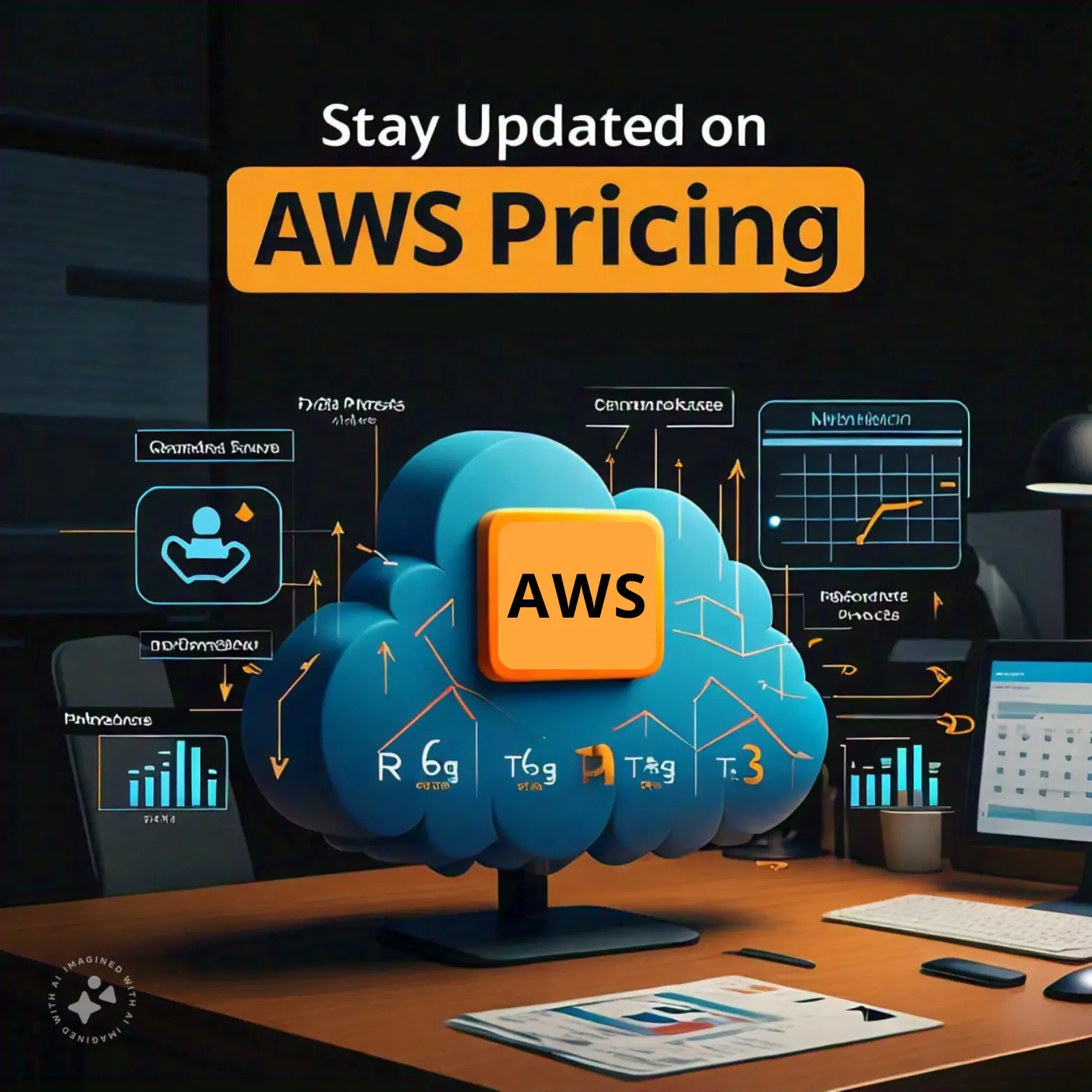
Staying abreast of AWS pricing changes is crucial for maintaining cost efficiency. Fluctuating prices, new instance types, and evolving pricing models necessitate a proactive approach to cost management.
Key Benefits of Staying Updated
- Optimized Cost Efficiency: Leverage newer, more cost-effective instance types like r6g and t4g to reduce expenses without compromising performance.
- Enhanced Budgeting and Forecasting: Accurately predict costs based on updated pricing information, preventing budget overruns.
- Improved Resource Utilization: Make informed decisions about rightsizing instances and selecting optimal service offerings.
- Competitive Advantage: Gain a competitive edge by capitalizing on cost savings to reinvest in growth and innovation.
Strategies for Staying Informed
- Regularly Review AWS Pricing Pages: Monitor changes in instance types, storage options, and other services.
- Leverage AWS Cost Explorer: Analyze cost trends and identify potential savings opportunities based on pricing updates.
- Subscribe to AWS Pricing Updates: Stay informed about new pricing models, discounts, and offers.
- Utilize Third-Party Tools: Some tools provide pricing analysis and recommendations based on the latest AWS pricing data.
Real-World Example:
A gaming company faced rising cloud costs due to their games’ growing popularity. They tackled this by staying on top of AWS pricing changes and migrating their workloads from older, pricier instance types, such as c5, to newer and more affordable options like c6i. This switch led to a 20% reduction in compute costs, all while keeping game performance steady.
To further cut costs, they leveraged AWS Savings Plans for their predictable workloads, achieving an additional 15% savings.
By actively tracking AWS pricing and making strategic updates, the gaming company managed to control expenses effectively while maintaining high performance.
7.3. Automate Cost Optimization
At Madgical Techdom, we tackled rising AWS expenses head-on by automating the lifecycle management of our EC2 instances. We set up schedules to automatically stop non-production instances during off-peak hours—like nights and weekends—and restart them when business hours begin. This smart scheduling led to over a 50% reduction in our EC2 costs.
This approach mirrors what many businesses aim for: slashing operational expenses while keeping service quality intact. By aligning resource utilization with actual business needs, we’ve demonstrated how targeted automation can drive significant cost savings.
The source code is available publicly, and you can download it from here. Detailed instructions on usage are included within the repository.
Consider these continuous optimization and monitoring tasks, their effort and savings indicators, and potential cost savings to maintain ongoing cost efficiency and operational effectiveness:
| Task | Effort | Savings | Estimated Savings |
|---|---|---|---|
| Monitor Resource Utilization | ★★★ | ★★★ | 20-30% |
| Stay Updated on AWS Pricing | ★ | ★★ | 15-20% |
| Automate Cost Optimization | ★★★★ | ★★★★★ | Up to 50% |
8. Conclusion
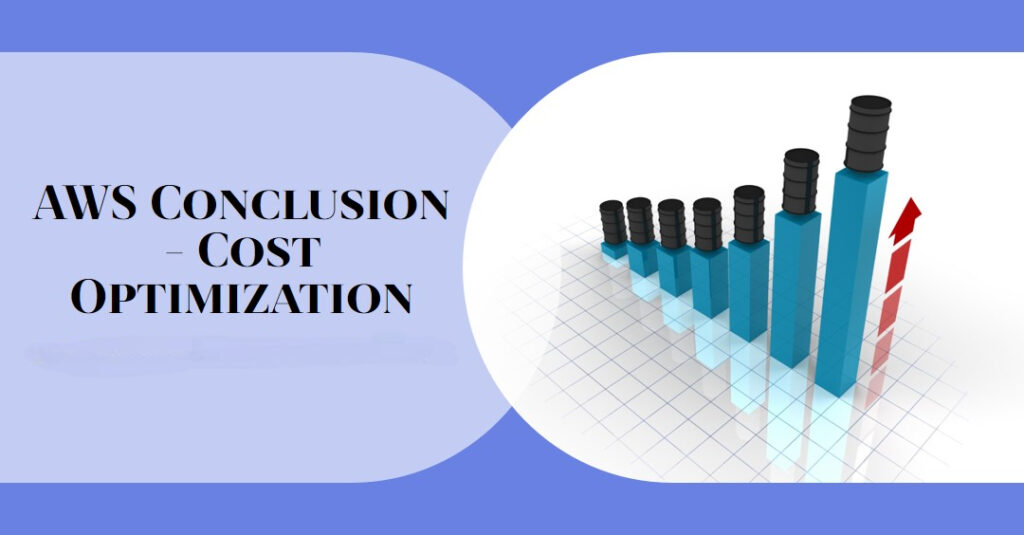
To cut down your AWS costs while keeping your apps running smoothly, follow these tips and use AWS’s cost management tools. Regularly check and tweak your setup because cost optimization is a continuous process. Use AWS Cost Explorer to track your spending, set budgets to keep costs in check, and turn to AWS Trusted Advisor for tips on making your resources more efficient. Picking the right pricing options like Reserved Instances, Savings Plans, and Spot Instances can lead to big savings.
Also, manage your storage smartly by choosing the right S3 storage classes and setting up lifecycle policies to keep data costs under control. Reduce unnecessary data transfers and optimize your network setup to cut costs even further. By consistently refining these practices, you’ll keep your AWS environment both cost-effective and scalable.
Case Studies: Our Impactful Work for Clients
Optimized Infrastructure Saves Fintech Company Thousands
A fintech company was grappling with cloud costs soaring over $500,000 a year. We took a deep dive into their cloud usage, fine-tuned their resource allocation, and implemented Reserved Instances and AWS Savings Plans. With these adjustments, we managed to cut their costs by around $80,000 annually.
Digital Product Company: Cloud Costs and Performance Optimization
We helped a software product company tackle rising cloud expenses and performance issues. By tweaking their ASG policies, moving their Velocity DB to Azure RDS, resizing EC2/RDS instances, and using Spot Instances for non-production environments, we saved them about $30,000 a year while boosting performance and scalability.
Customer Support: Scalable and Cost-Effective Database Migration
A startup focused on customer support chatbots struggled with an outdated MySQL setup. We suggested migrating to MySQL Flexible Server on Microsoft Azure. This move not only cut their costs by $40,000 a year but also boosted performance by 24%, offering a more scalable and reliable database solution.
IoT Data: Archival Strategy for Performance and Cost Efficiency
For an IoT company, we developed a smart archival strategy using AWS Glue, Amazon S3, and AWS Athena, and automated it with AWS Lambda. This strategy helped manage data growth, slashed storage costs, and improved query performance.